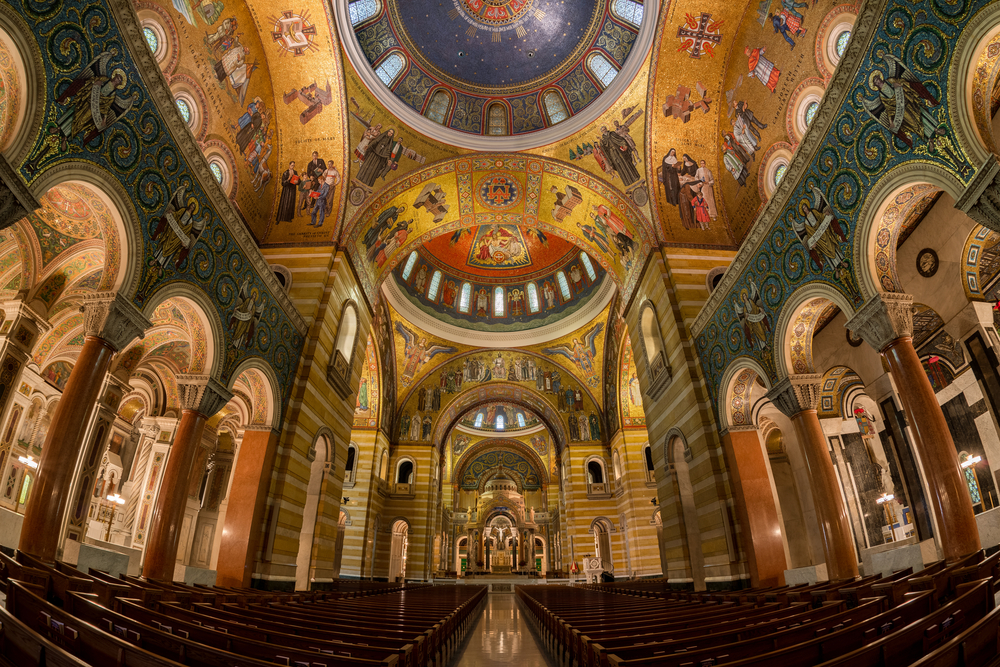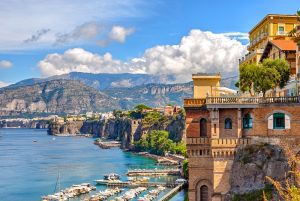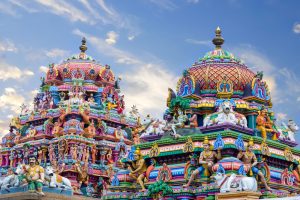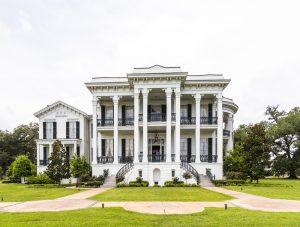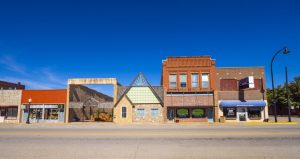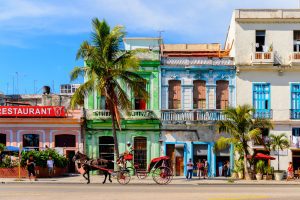Although Europe is considered to be the home to some of the most extravagant churches and cathedrals ever built, the United States has the beauty of diversity thanks to the abundance of immigrants that made it their home.
You’ll find parishes of all different architectural styles and varying cultures across the country due to the people who once settled on the land.
Whether you’re looking for new churches built in the 21st century or ancient cathedrals dating back hundreds of years, there’s no shortage of beautiful churches in the United States.
Here’s a list of the most beautiful churches and cathedrals you can have the pleasure of visiting in the U.S., regardless of your religion.
Table of Contents
1. Cathedral of Saint John the Baptist
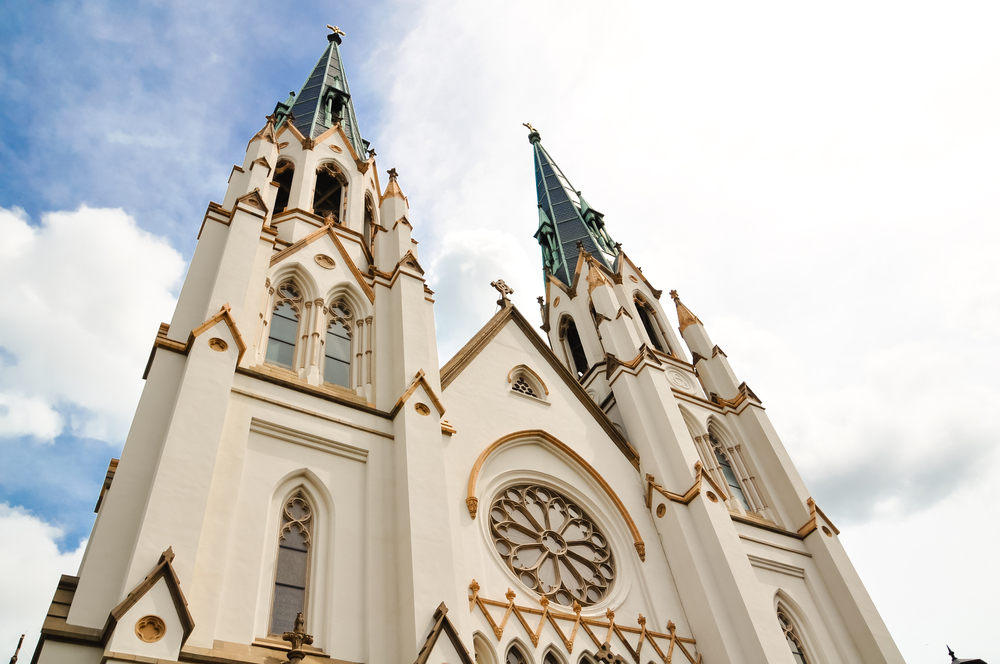
The building of the Cathedral of Saint John the Baptist in Savannah, Georgia was put into motion when the area saw its first congregation in the late 1700s.
However, it wasn’t until 1835 that the church was built, and it has seen its fair share of construction. It has been expanded on to hold more guests and add towering spires – and immense restoration was needed after a devastating fire in 1898.
After 14 years of hard work, the cathedral stands taller and more beautiful than ever with its exquisite murals and beautiful stained glass windows.
As of 2020, Pope Francis declared the cathedral a minor basilica, which is an honor only held by a handful of cathedrals across the nation.
2. Memorial Presbyterian Church
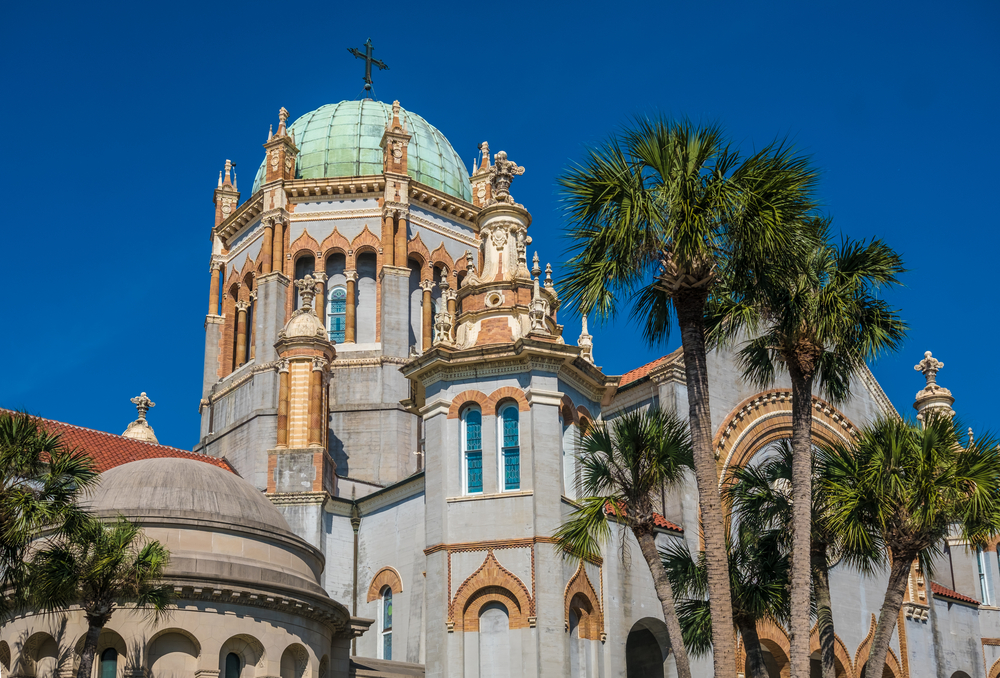
Located in the historic town of Saint Augustine, the Memorial Presbyterian Church was the first of its kind in the area and served as a turning point for many church-goers.
Over the course of 5 years, Reverend Dr. William McWhir and his team worked tirelessly to build a place of worship that they could be proud of and completed the task by 1830.
The church has served many purposes over its lifetime, and was even used as a military base for the Union army during the Civil War.
Today, you can go to mass, join an extracurricular activity, and come closer to the community while admiring the church’s unique features, like the spacious copper dome imported from Italy.
3. Saint Patrick’s Cathedral
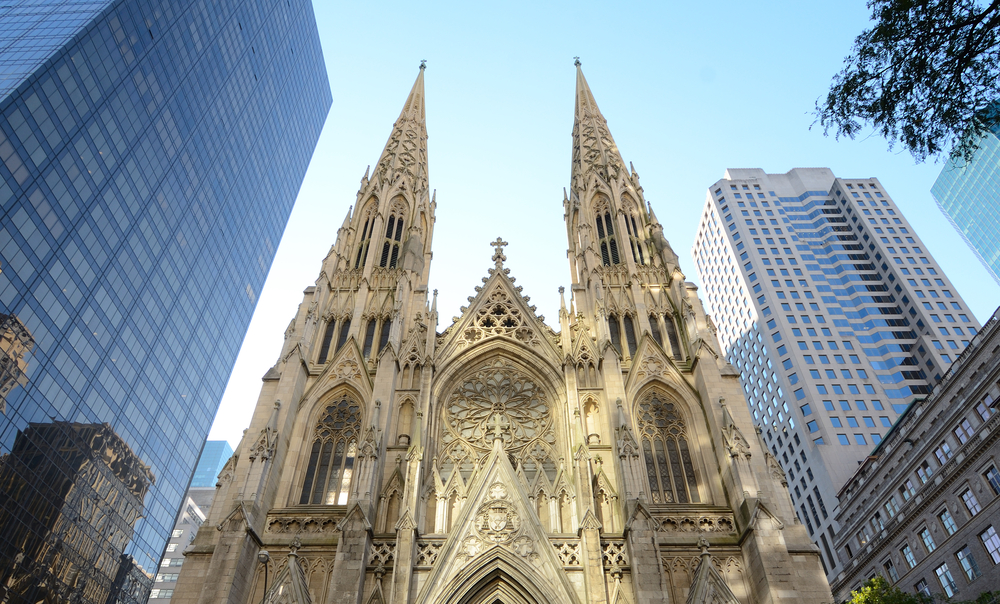
Built with the help of blood, sweat, and tears of the poor immigrants that laid their roots in New York City, a visit to Saint Patrick’s Cathedral is a patronage to the city itself.
During the late 1700s, there was only one priest in all of New York City – and a growing number of Catholics led the plans for the cathedral, making it the oldest Roman Catholic parish in New York City.
The cathedral has been undergoing a painstaking restoration plan with over $200 million dollars dedicated to preserving and enhancing the cathedral’s many assets.
Known as the largest Neo-Gothic cathedral in all of North America, the church runs as long as a full city block and can seat over 3,000 people.
Marvel at the bronze doors lined with small, detailed statues of Saints, the intricate stained glass windows designed by artists from all over Europe, and the sculpted altar that is not only rare, but beautiful.
4. Saint Theodosius Orthodox Cathedral
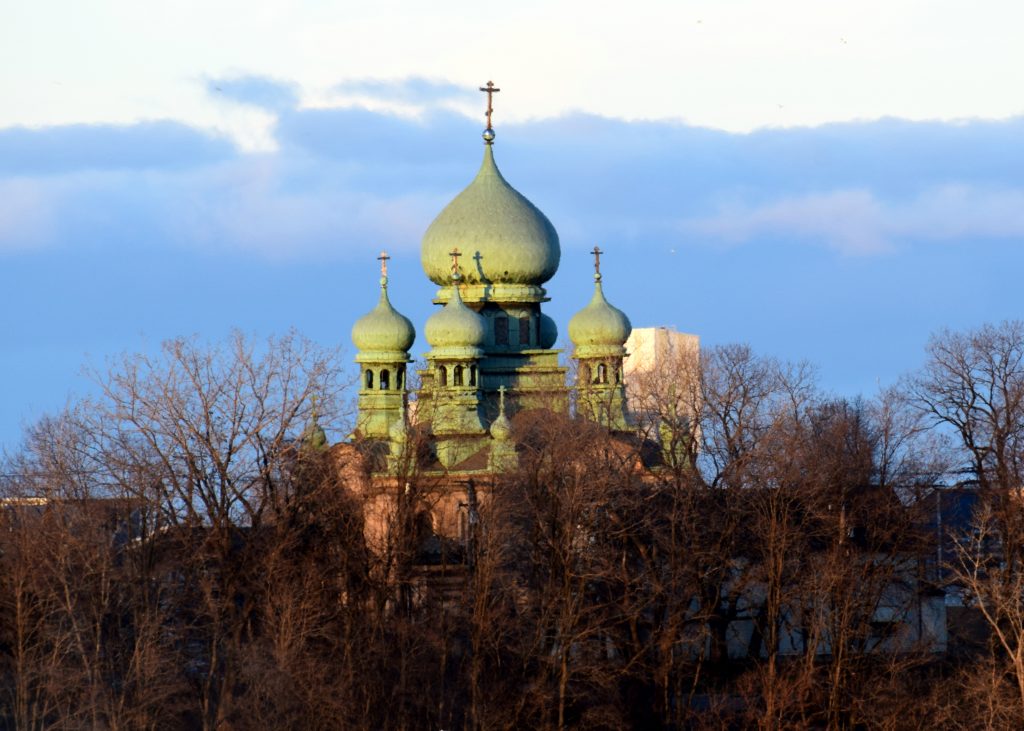
Known as the oldest Orthodox Christian Church in the entire state of Ohio, the Saint Theodosius Orthodox Cathedral is an important part of the state’s history and displays some of the grandest examples of Russian architecture in the states.
The cathedral was established by a group of Russian immigrants, who were ready to settle down in Tremont and needed a place to practice their religion.
It is impossible to miss its lovely Neo-Byzantine style architecture sporting an abundance of copper domes varying in size and height.
As beautiful as the outside of the cathedral is, you’ll be even more impressed with the interior, with its many hand-painted murals that cover the walls and ceilings.
5. Washington National Cathedral
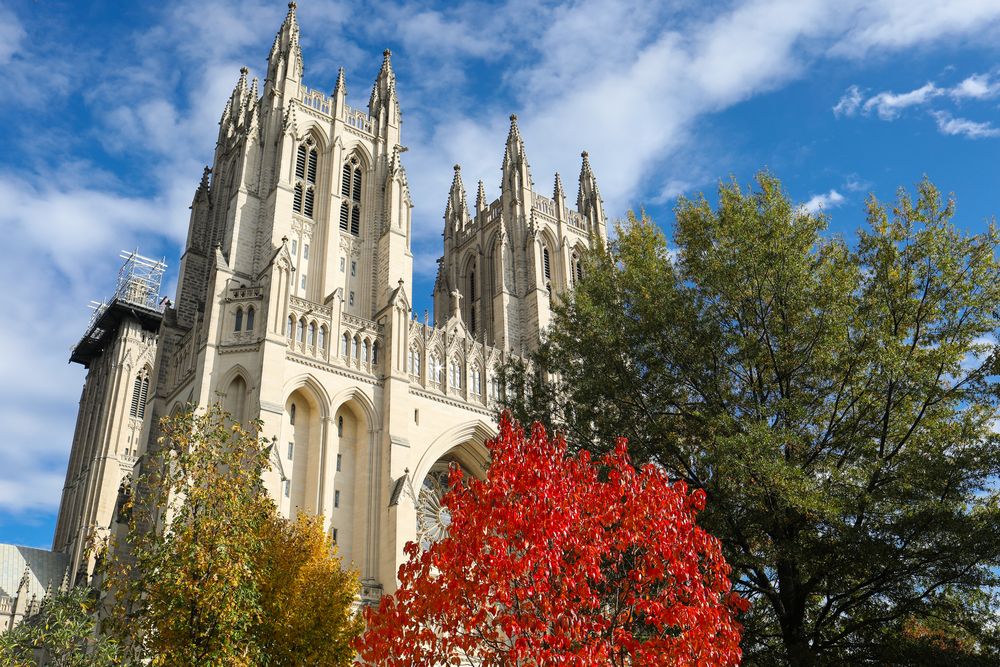
Although plans to build a cathedral that would represent the nation were created in the late 1700s, it wasn’t until the early 20th century that the Washington National Cathedral building process began – and it took 83 years to complete.
Yet, everything about the grounds feels completely ancient, with its Neo-Gothic style architecture, medieval gardens, and stained glass windows.
The beauty alone is enough to plan a visit – but even more interesting, is the fact that two historic figures (Helen Keller and President Woodrow Wilson), are buried here.
Take a guided tour in the summer or grab a map at the entrance to help you find over 100 gargoyles and grotesques that decorate the exterior of the building.
6. Cathedral Basilica of Saint Louis

The building of the Cathedral Basilica of Saint Louis was no easy feat, and many unforeseen circumstances caused delays that would ultimately postpone its grand opening for over 20 years.
The plan was established in 1870 by Archbishop Peter Richard Kenrick, but the building process didn’t start until 1914 when a new Archbishop rose to the challenge.
It wasn’t until 1988 that the cathedral and its many exquisite details were fully completed and churchgoers and spectators alike lined up at the grand doors to see the final masterpiece.
The cathedral has the largest collection of mosaics in the western hemisphere, quite a few burial crypts, and a large sculpture at its entrance to promote diversity.
7. Saint Mary of the Angels Catholic Church
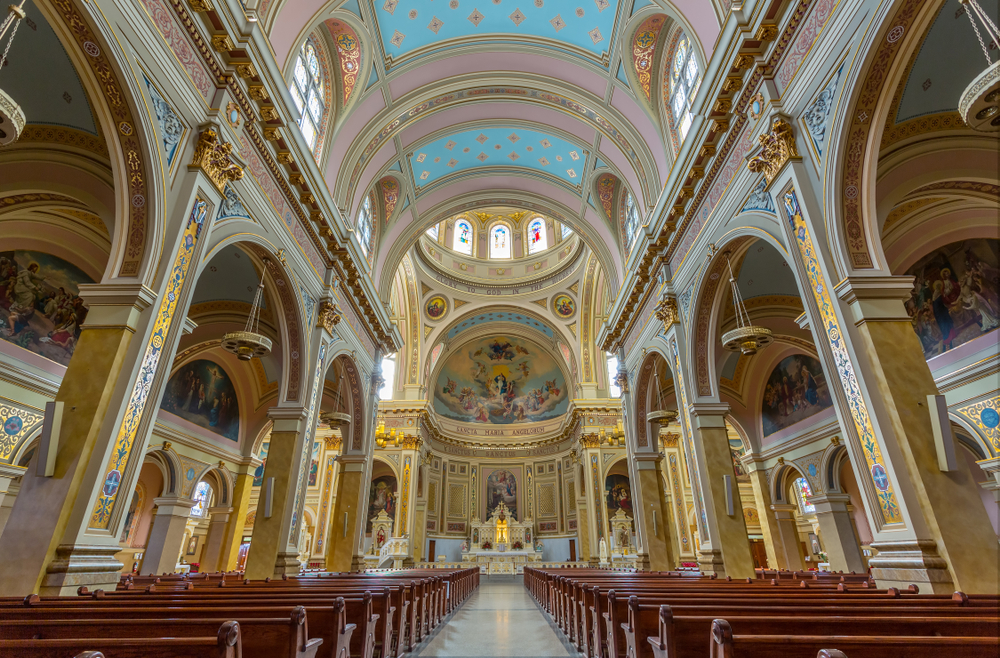
Known for having some of the most beautiful Roman Renaissance architecture in the United States, Saint Mary of the Angels Catholic Church is not only a staple to Illinois, but to the entire country.
The church was built in an area once completely dedicated to farming, with a very small population – but as war struck Poland, immigrants began to call this place home. The growing Polish community quickly drew up plans and bought the land to build a church so that they could have a safe place to practice their religion.
The Polish style of the church is breathtaking, with its twin bell towers, marvelous dome, and elaborate paintings.
8. Cathedral of Saint Paul

Once a small chapel located atop a cliff in the heart of Saint Paul, Minnesota, the Cathedral Of Saint Paul was built upon the original church donated by Priest Lucien Galtier when the area began to see an influx of churchgoers.
The new and improved structure was to be built with Beaux-Arts architecture, and designer E. L. Masqueray did a wonderful job bringing that style to life.
The exterior of the magnificent church is made up of granite while the interior was composed of American travertine. Its large, open setting allows for 3,000 seated guests at a time.
Every detail of its construction has significance in some way, like how the altar is surrounded by 7 bronze grilles to honor Saint Paul and the Shrine of the Nations dedicated to patron saints nationwide.
9. The Painted Churches
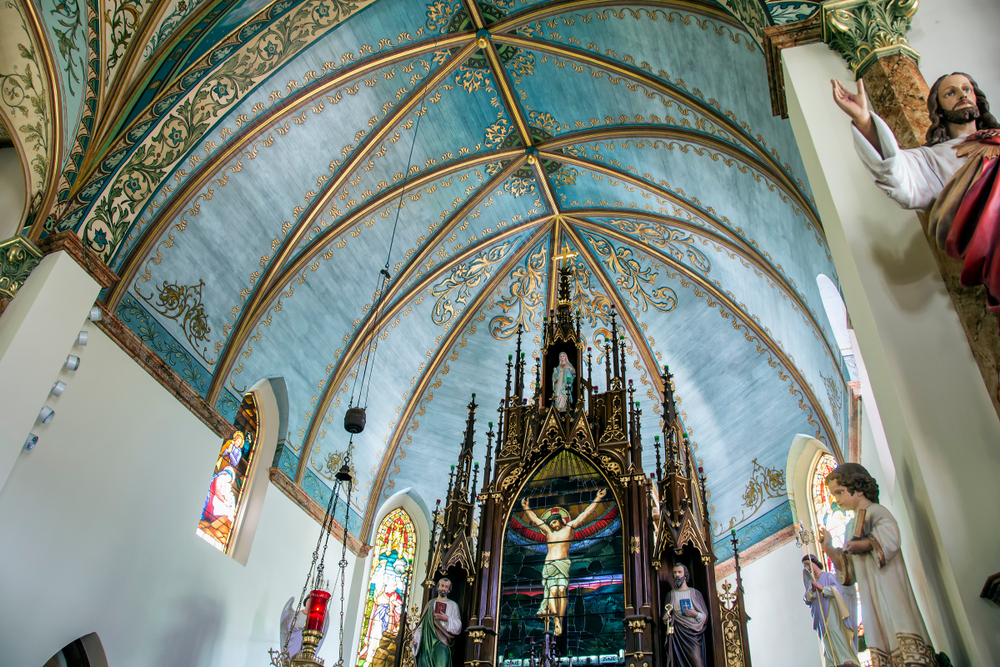
During the late 1800s, as German and Czech immigrants declared the area home, a collection of small churches were built and painted in Texas to mirror the churches they had back in their home countries.
Not only are these churches significant for providing immigrants the freedom to practice their religion in peace, but it’s also considered to be some of the finest examples of German and Czech tradition and culture.
The grandest of all these churches is St. Mary’s Catholic Church, also known as the “Queen of Painted Churches”, with its keen eye for detail and nearly 20 stained glass windows that cast colorful lights along its altar.
Although St. Mary’s remains in its original condition, some of the smaller painted churches like Saints Cyril and Methodius Catholic Church had to undergo painstaking restoration to reach the splendor you see today.
10. Cathedral of Saint John the Divine
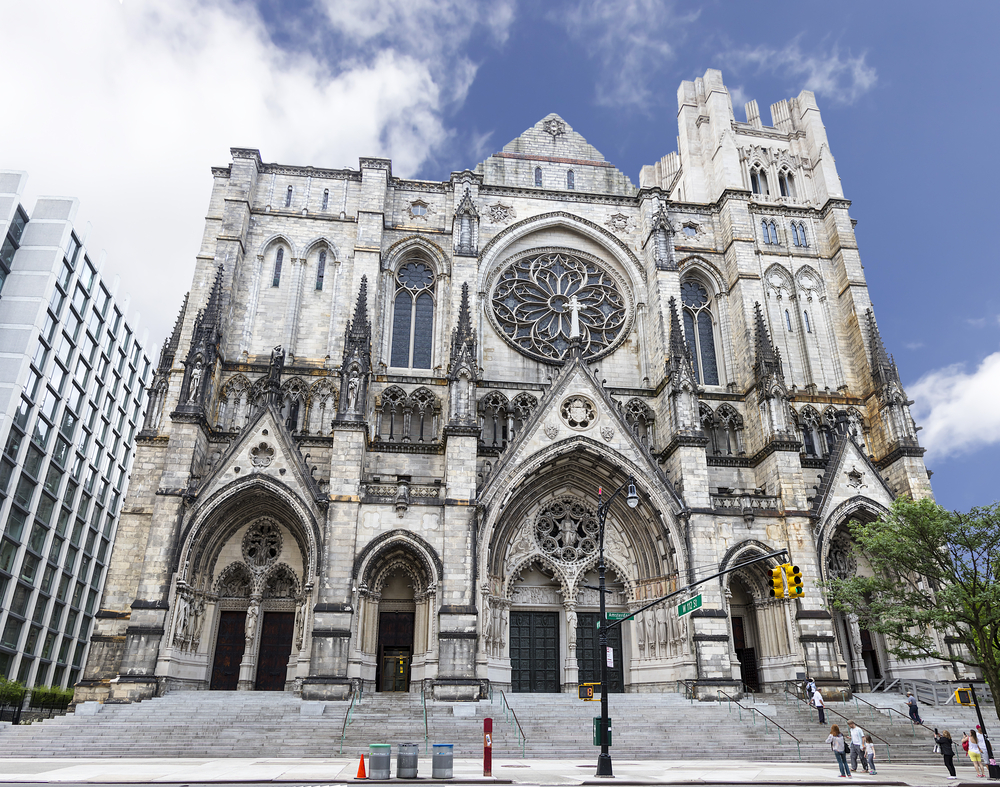
Still under construction to this day, the Cathedral of Saint John the Divine in New York is always looking for ways to become bigger and better – both in size and within the community.
Aside from the wish to grow the cathedral to even greater lengths, some of the construction work done over the years was a result of not one, but two fires that have broken out within the Parish’s depths.
Luckily, after many years of painstaking restoration, the cathedral stands in its original glory and was officially established as a historic landmark in 2017.
The cathedral boasts a combination of French and English Gothic style, and although only two-thirds of the original plan have been completed, it’s a magnificent sight to see.
11. Cathedral-Basilica of St. Louis King of France
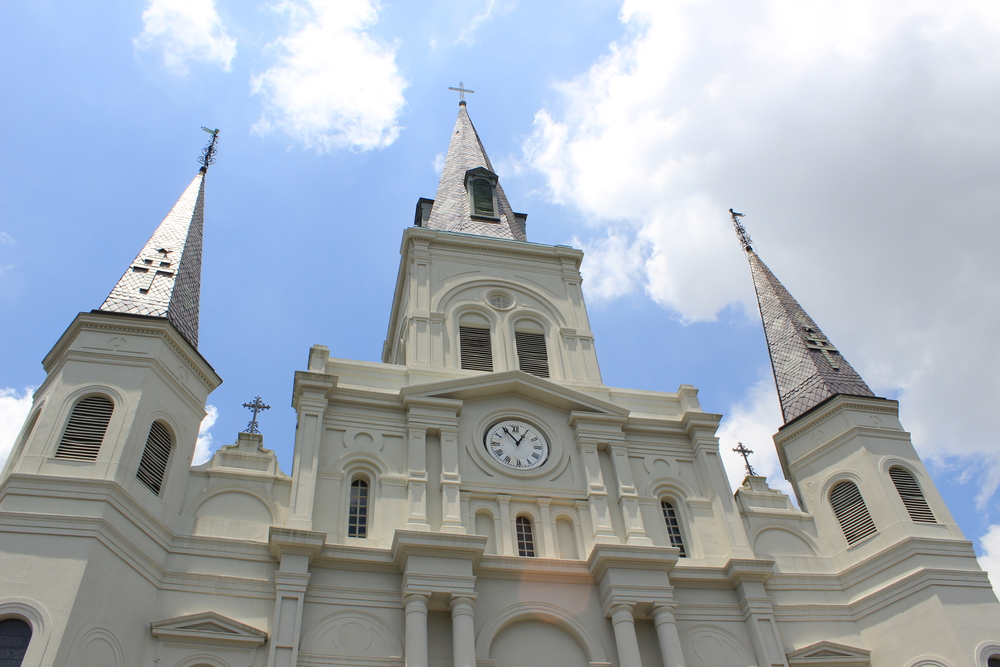
Known for being the most iconic landmark in New Orleans, the Cathedral-Basilica of St. Louis King of France is referred to as the heart of the city, and with good reason.
The original church was built in the early 1720s, and served as a place of worship for both the rich and the poor until a tragic fire burned it to the ground in 1788.
Thanks to the wealth and kindness of Don Andres Almonester y Roxas, a bigger and better parish was established, and soon became a staple of life in Louisiana.
More than 10 important religious figures are buried underneath the cathedral and it’s said to be haunted by priest Antonio de Sedella and friar Père Dagobert.
12. Wayfarers Chapel
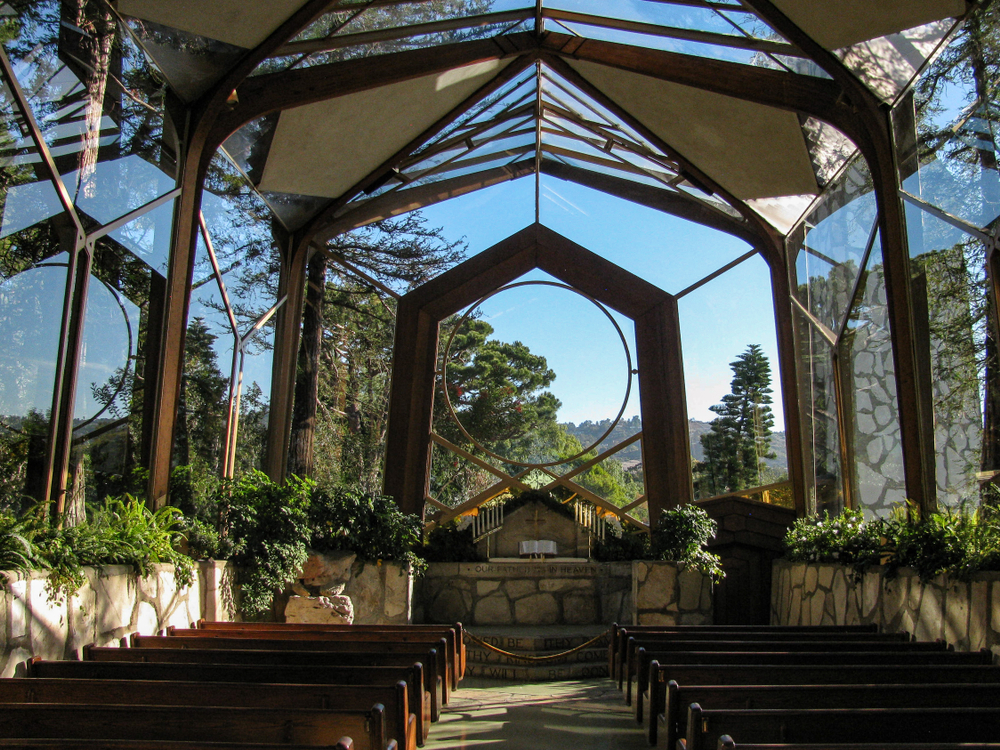
A dream turned into reality, the concept of the Wayfarers Chapel originated in the mind of Elizabeth Sewall Schellenberg in the late 1920s.
The chapel was built in California with a focus on nature and natural light. Although the structure itself is small, the land it sits on stretches for miles and provides breathtaking views of the Pacific Ocean.
Postponed due to the Great Depression and World War II, it wasn’t until 1951 that the chapel was completed, but it soon acquired nicknames like “The Tree Chapel” and “The Glass Church”.
The chapel follows a very geometric architectural style, and is almost entirely comprised of windows to allow guests to feel completely immersed with nature and God.
13. The Cathedral of Saint Andrew
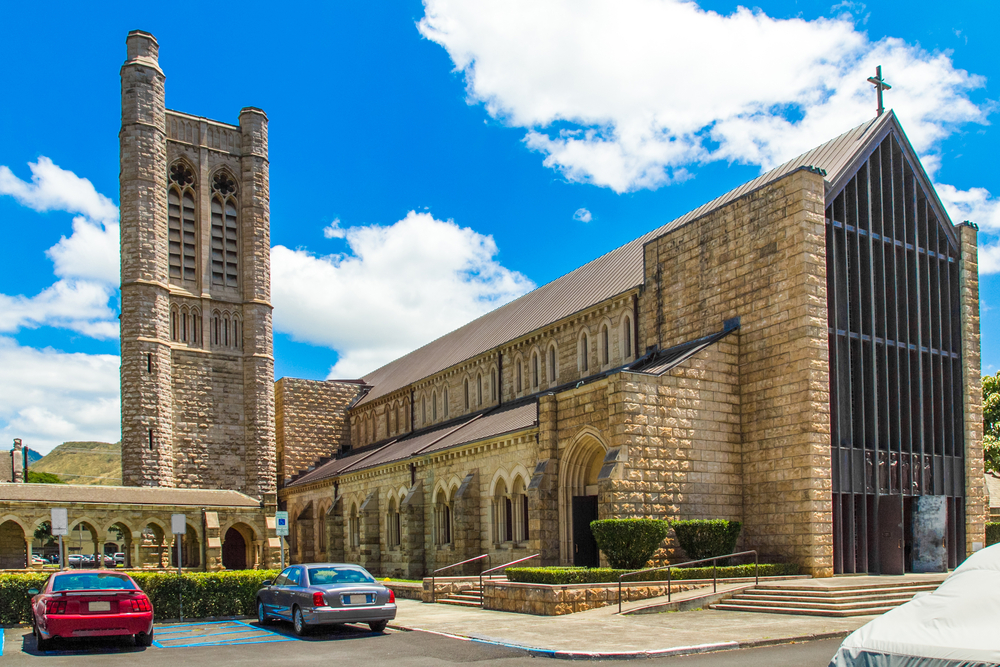
One of three cathedrals spread across the islands of Hawaii, The Cathedral of Saint Andrew stands out amongst the rest thanks to its exquisite design and historic significance.
The king and queen that established the plans for the cathedral, Kamehameha IV and Queen Emma, were devoted members of the Church of England and wanted to introduce such wonders to their newfound home.
Although the king died before plans could be set to action, his brother carried out his dream of bringing the parish to Hawaii and the cathedral was completed in the late 1800s.
The French Gothic style architecture is a marvelous sight, and the floor to ceiling stained glass windows tell the story of the immigrants who settled on the land.
14. Church of the Holy Ascension
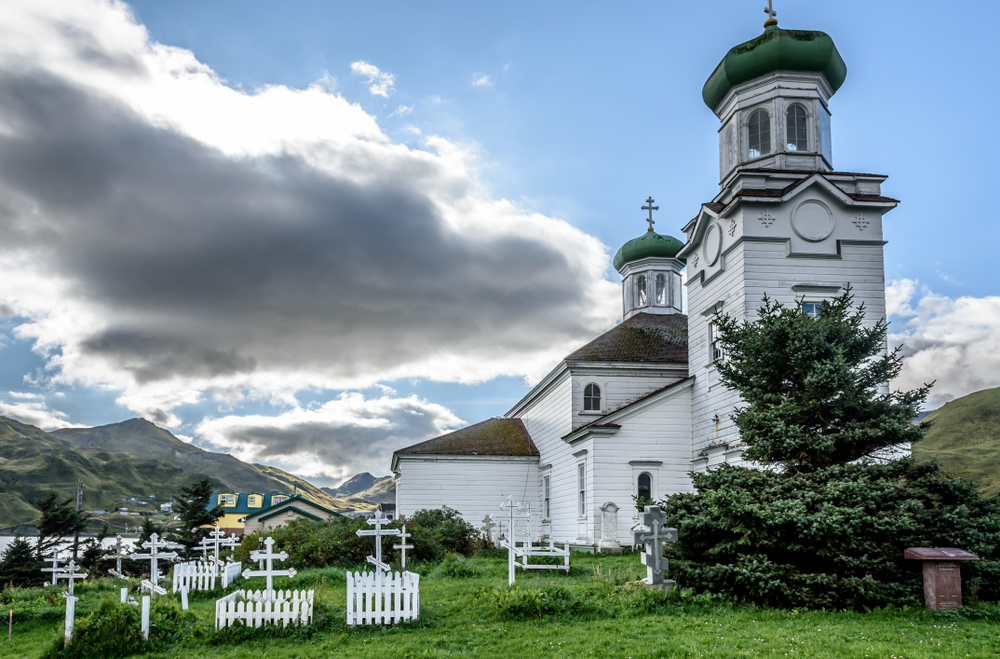
Built on the foundation of the original church constructed in 1826, the Church of the Holy Ascension honors the first founder of its grounds, Father Ioann Veniaminov, who is also known as Saint Innocent of Alaska.
It was thanks to him and his teachings of both religion and Russian architecture that the breathtaking church stands today, as a historic landmark on the Aleutian Islands.
The unique structure was built in a way that portrays the sanctuary, nave, side chapels, and bell tower in a layout that resembles a cross.
Most of the fine detail was focused on the upper quadrants of the church to gear the eyes of visitors upwards towards God – while marveling in all of its beauty.
15. Thorncrown Chapel
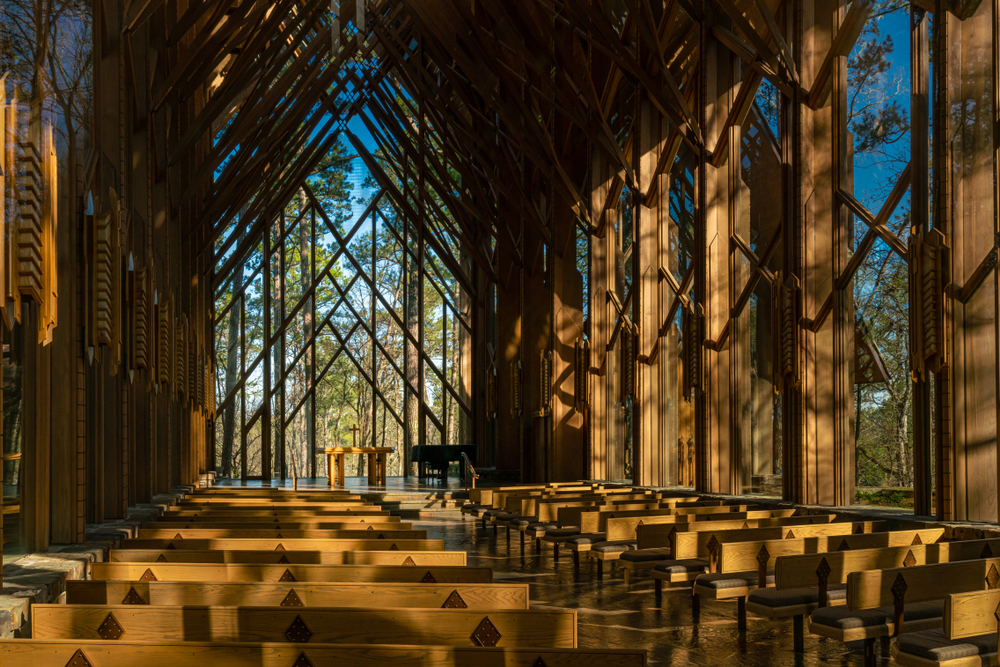
Nestled in the woods of Eureka Springs, Arkansas stands the one of a kind structure, known as the Thorncrown Chapel, drawing in guests from across the country regardless of religion.
The chapel stands tall at 48 feet high, and is made up of 425 windows – totaling out at over 6,000 square feet of glass that lets in natural light in every direction.
Completed in 1980, the chapel is considered to be one of the finest parishes of modern times and its use of all organic materials is both impressive and intriguing.
Surrounded by a series of rock walls, the chapel gives off the appearance of being part of the Ozark hillside – which further demonstrates its connection to nature, and provides wonderful views of the surrounding woodland.
16. Hartford Connecticut LDS Temple
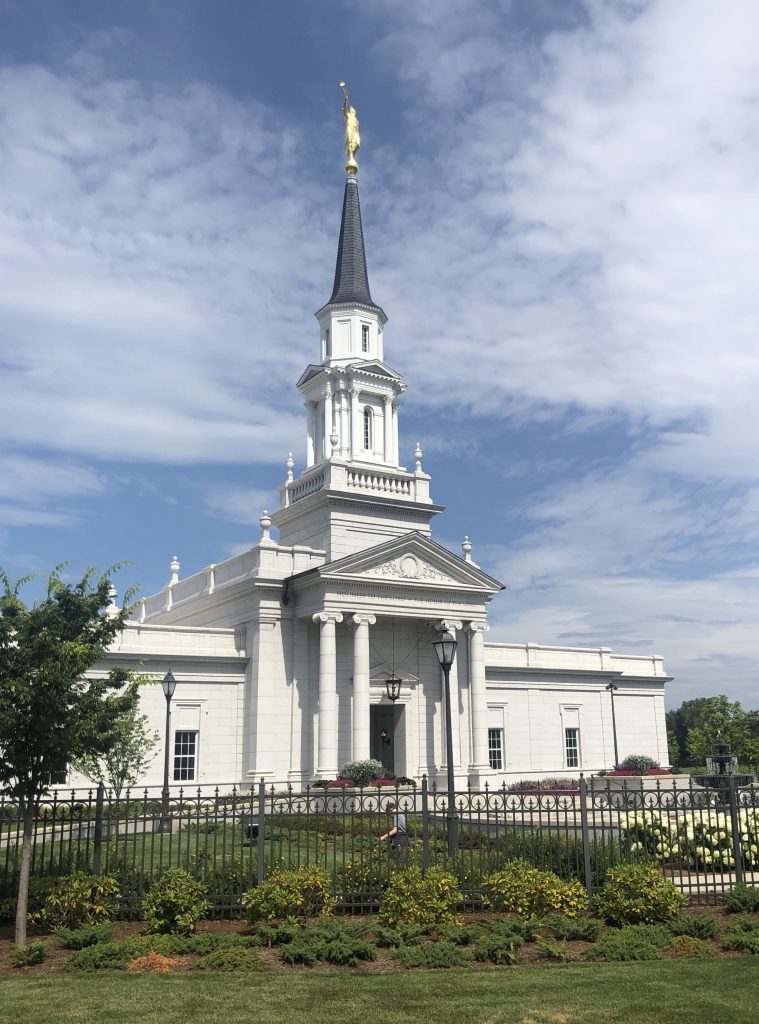
The first of its kind in Connecticut, the Hartford Connecticut LDS Temple was a groundbreaking accomplishment for the Mormon community.
The original plans for the temple were established in 1992, but due to the inability to find the proper grounds, the project was abandoned just three years later, and wasn’t reintroduced until 2010.
After the second announcement to build the church, the project faced an unruly battle of lawsuits and objections that pushed the construction even further back until 2013, and the church wasn’t completed until 2016.
The struggle to construct this magnificent church only adds to its importance, and it’s so breathtaking that it won the title of the most beautiful parish in the state.
17. Historic St. Peter’s Episcopal Church
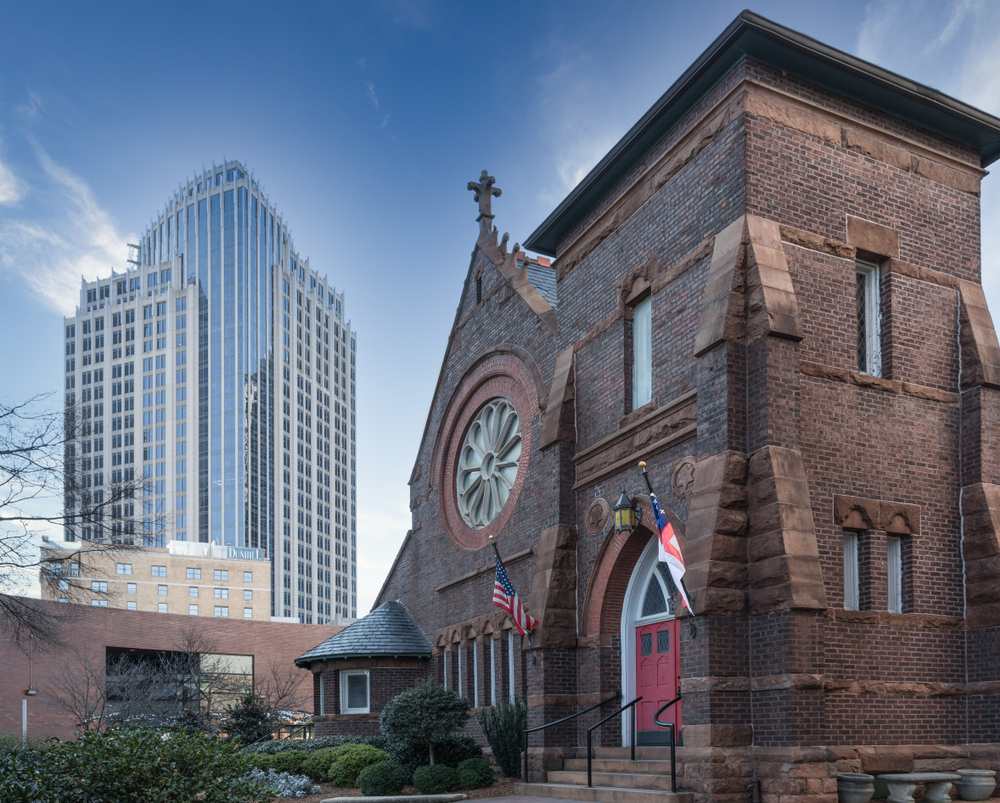
Overflowing with historic significance, the St. Peter’s Episcopal Church is referred to as the mother church of North Carolina. The church not only served as a place of worship, but was one of the leading contributors to the community as a whole.
First established in 1844, the church was rebuilt in 1895 with high-quality materials to ensure long lasting preservation, and additional sections were added in 1912 and again in 1998.
Dating back to the Civil War, the parish raised money to provide soldiers with prayer books and even established two nearby hospitals to aid minorities and poor immigrants that were often overlooked.
18. St. Luke the Evangelist Catholic Church
Known for being one of the more recently built parishes, the St. Luke the Evangelist Catholic Church does a wonderful job of incorporating modern style with religious significance.
Nestled on 35 acres of open land, the church was built in unison with Ashland Ridge Elementary School to provide a place of worship and education.
The church was constructed with a focus of simplicity that can be seen and admired through its straightforward design and use of natural light to conserve energy.
19. Basilica of St. Fidelis
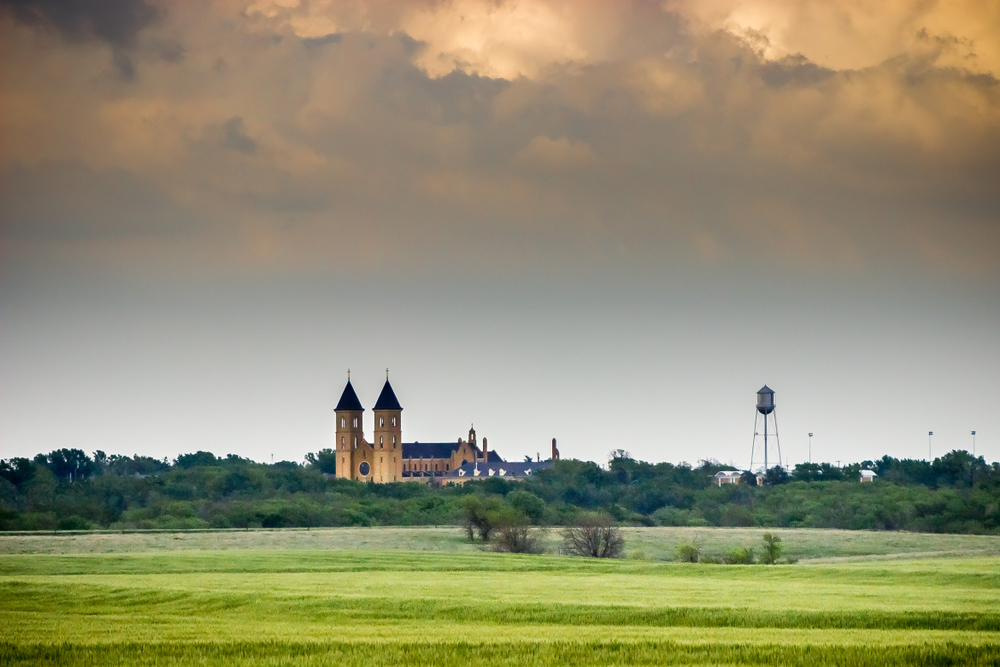
The grand Basilica of St. Fidelis serves as a reminder of the dedication of its people to both the land, and their religion, as it was built by the few farmers who rooted themselves to the area and the hardships that came along with it.
The area was first established by English farmers, who quickly realized that the land would cause more hardship than it was worth – and fled, leaving the town to the poor immigrants of Southern Russia. The Russian community worked with what they had, and dedicated themselves to making the land suitable for survival.
As the town grew, the people worked together to create a place of worship that they could be proud of, with its Romanesque architecture and cross-like shape.
20. Baltimore Basilica

Known as the first great urban cathedral built in all of the United States, the Baltimore Basilica is not only a place of worship, but a leading moment in the development of churches in populated cities.
The church was completed in 1821 and had managed to stay in fair condition for nearly 200 years before the parish decided to dedicate time and money to restore it to its original glory in 2001.
Now, spectators and churchgoers can visit the crypt of the Archbishop, explore the new chapel, and learn more about the Basilica’s importance at the Basilica Museum.
21. Cathedral Basilica of the Assumption
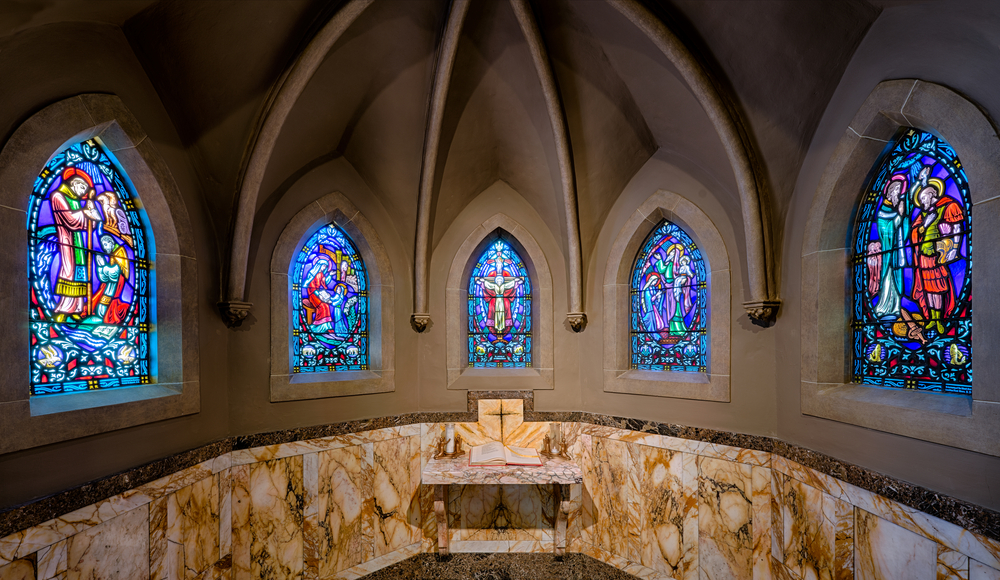
Although the cathedral hasn’t been completed yet to this day, it’s a beautiful structure that holds great importance to the community.
The building process began in 1894 and came to an early end in 1915 when the leader of the plans, Bishop Maes, passed away.
The exterior of the cathedral is a fine example of Gothic architecture, with its many gargoyles perched high amongst its ledges. The inside follows a more French style, with colorful murals throughout. The cathedral is also known for having the largest hand-made stained glass window in the entire world.
22. Unitarian Church in Charleston
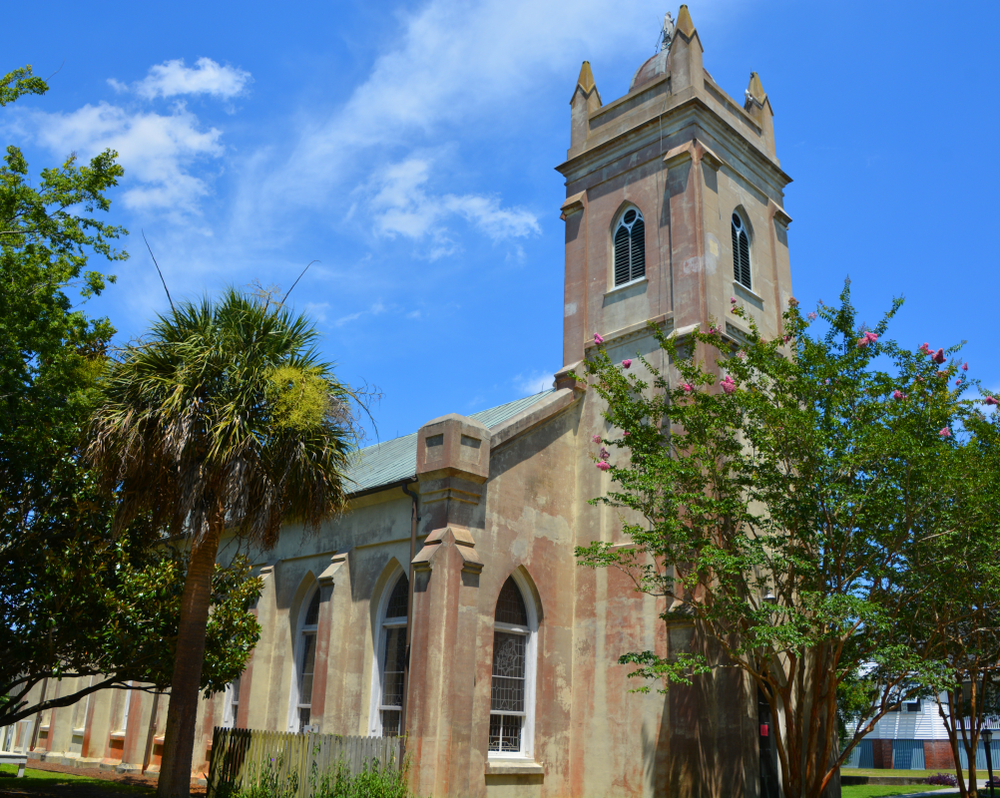
Known as the oldest Unitarian church in the southern region and the second oldest building in the city of Charleston, the Unitarian Church is an important part of history.
Originally built to provide additional space to the Independent Church, the start of the Revolutionary War caused a delay in construction – and the second meeting house wasn’t completed until 1787.
For nearly 30 years after its completion, the Unitarian Church and Independent Church acted as one until Reverend Anthony Forster turned to Unitarian beliefs and officially split the parish in two.
23. Chapel in the Hills
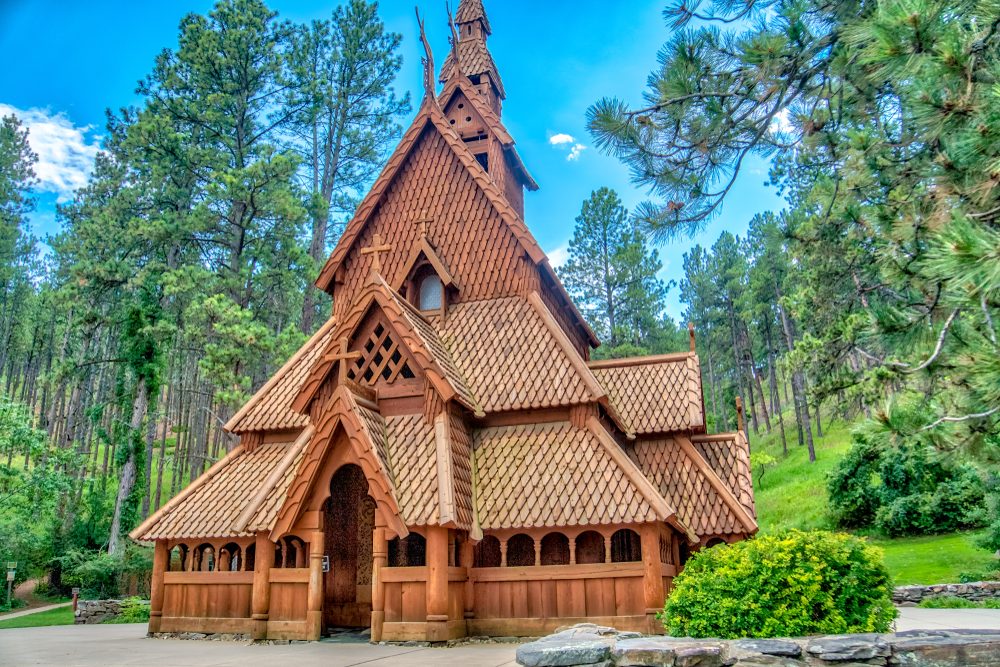
Built as a replica of the iconic Borgund Stavkirk in Norway, the Chapel in the Hills is unlike any other parish in the country – and its scenic beauty is hard to beat.
The chapel is situated at the base of the Black Hills, and its remote location provides a sense of solitude and a peaceful setting for those looking to practice their religion.
Aside from the marvelous church, there is also a grass-roofed house that is authentic to Norwegian style, and a log cabin museum to learn more about the immigrants who traveled here in the 1800s.
24. Chapel of Thanksgiving
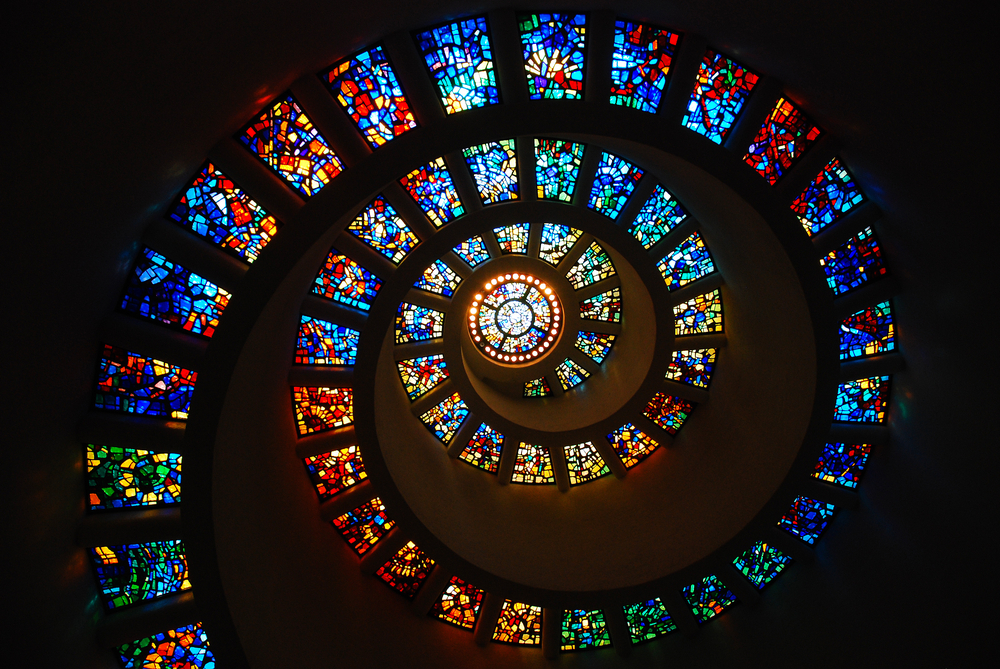
Born from the dream of 4 businessmen, the Chapel of Thanksgiving serves as a sanctuary for churchgoers and a tranquil escape from the busy city streets.
Every part of the parish and its surrounding grounds was intricately planned, from its large fountains drowning out the sounds of city life to the spiraled chapel that reflects ones journey through life.
The highlight of this beautiful chapel can be found on its upper level, and is known as the “Glory Window” for the spectacular way light shines through the massive stained glass window.
The chapel is only part of an extensive park system made up of gardens, groves, and halls – with a common goal of getting closer to God and the community through the help of nature.
25. St. John Cantius Church
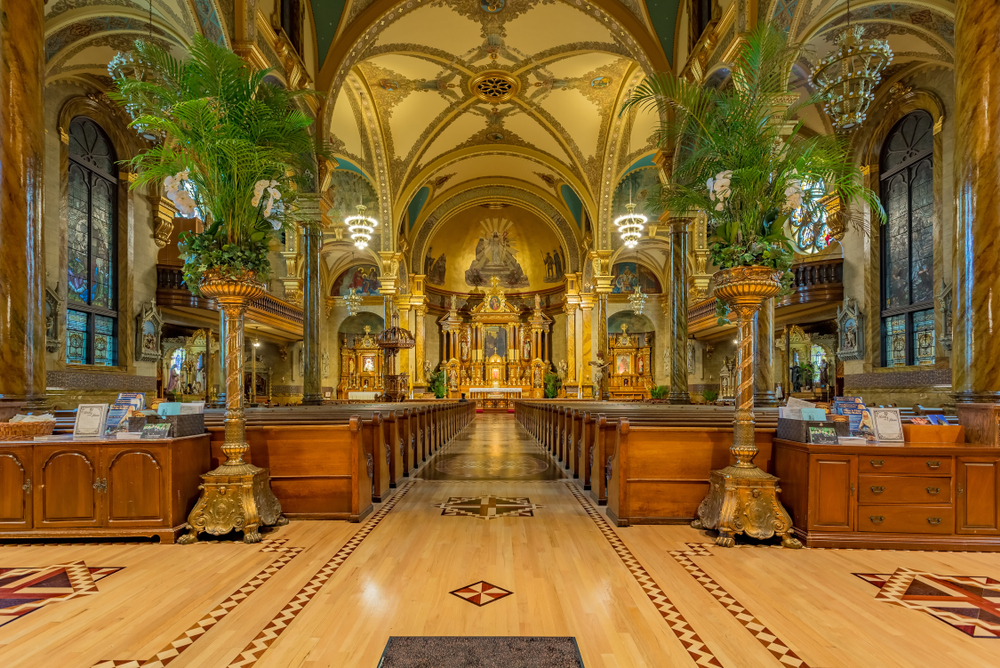
Established by immigrants of Poland in the late 19th century, the St. John Cantius Church welcomes visitors of all ethnicities, social classes, and age groups, and is even considered to be one of the most diverse churches in the state of Illinois.
The Polish style created a unique twist on traditional Baroque architecture, and the church’s structure is a perfect example of its splendor.
Remaining nearly intact for over a century, it wasn’t until recently that the congregation set forth a painstaking restoration plan to bring the parish back to its original glory.
26. Chapel of the Holy Cross
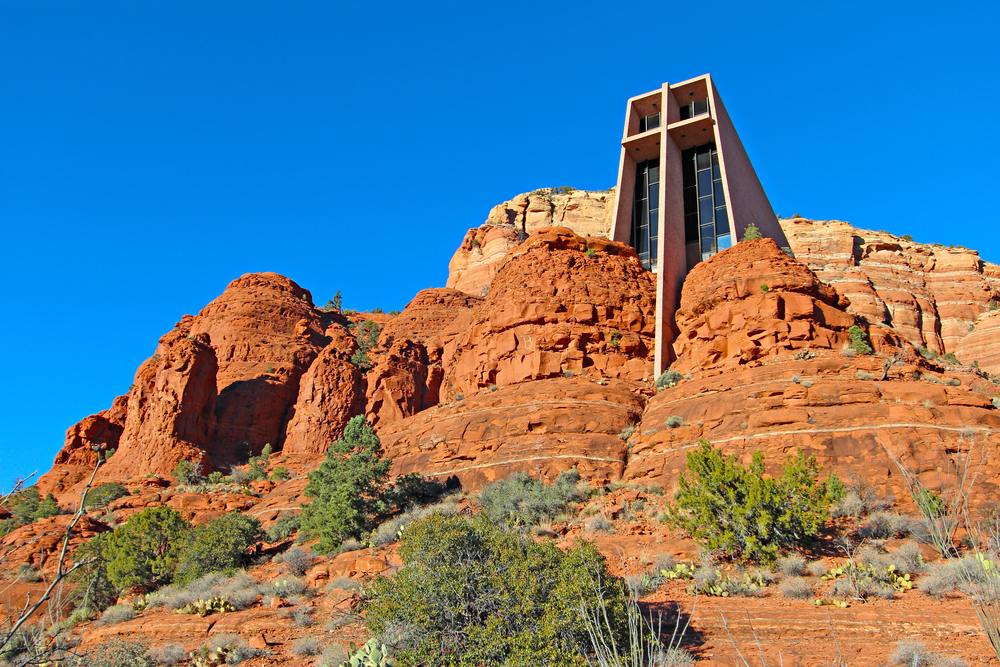
Perched high atop the red rocks in Sedona, Arizona, the Chapel of the Holy Cross sits nestled between two large rocks to enhance churchgoers’ feeling of unity with the nature that surrounds them.
Plans for the chapel were sparked by Marguerite Brunswig Staude, whose idea was inspired by the completion of the Empire State Building, in 1932. These plans were quickly forgotten about when World War II began, and wasn’t reintroduced until 1954, where it was built in less than 2 years thanks to the dedication of Fred Courkos.
The simple, yet efficient design allows for a lot of natural light, and its heavy materials guarantee a longer preservation period without the need for frequent restoration.
27. Cathedral of St. Helena

Severely damaged by a series of earthquakes that tormented the state of Montana in 1935, the Cathedral of St. Helena had to go under serious renovations to bring about the wondrous parish you see today.
However, this wasn’t the first nor the last time that the church would see renovations, as there’ve been many expansions throughout the years – like the spacious kitchen and social halls that were added in 2002.
The architecture of the cathedral was heavily influenced by the famous Votivkirche in Vienna, and is made up of over 60 stained glass windows and 2 towering spires.
28. The Basilica of St. Josaphat
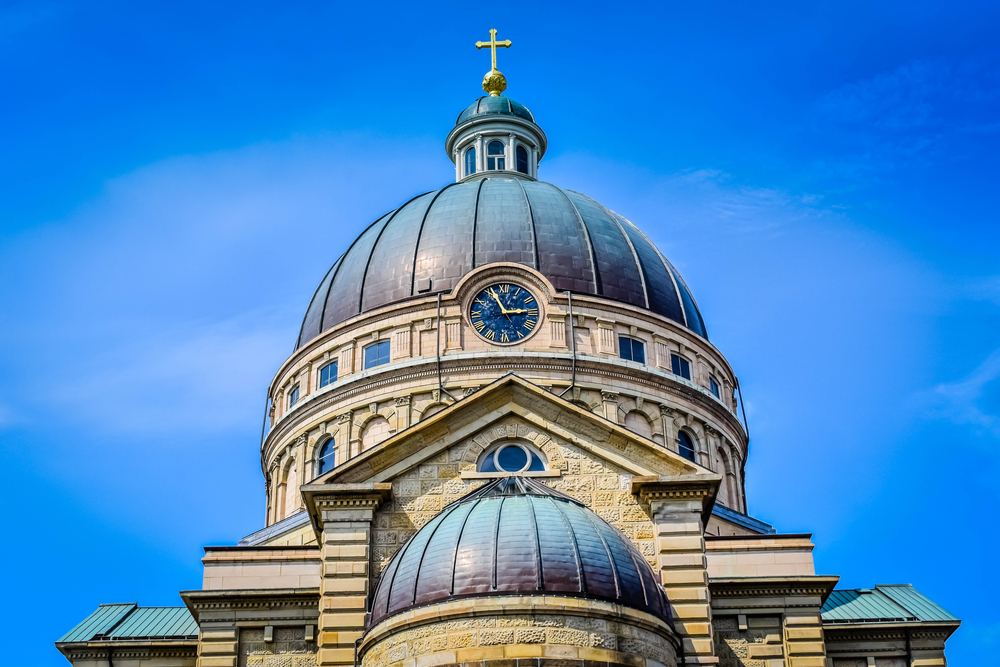
Known for having one of the most massive copper domes across the globe, the Basilica of St. Josaphat is a marvel of Polish architecture and heritage.
Polish immigrants flooded the streets of Milwaukee to escape the hardships brought on by the war, and quickly dedicated both their time and money to create a safe place for them to practice their religion.
As the population continued to grow, the church became too small for the congregation. When it tragically burned to the ground in 1889, the people used it as an opportunity to construct an even larger church – and the Basilica was born.
The exterior of the church is truly stunning, but the real showstopper is the exquisite detail put into the interior design with a focus on hand-painted murals.
29. Cathedral of Christ the Light
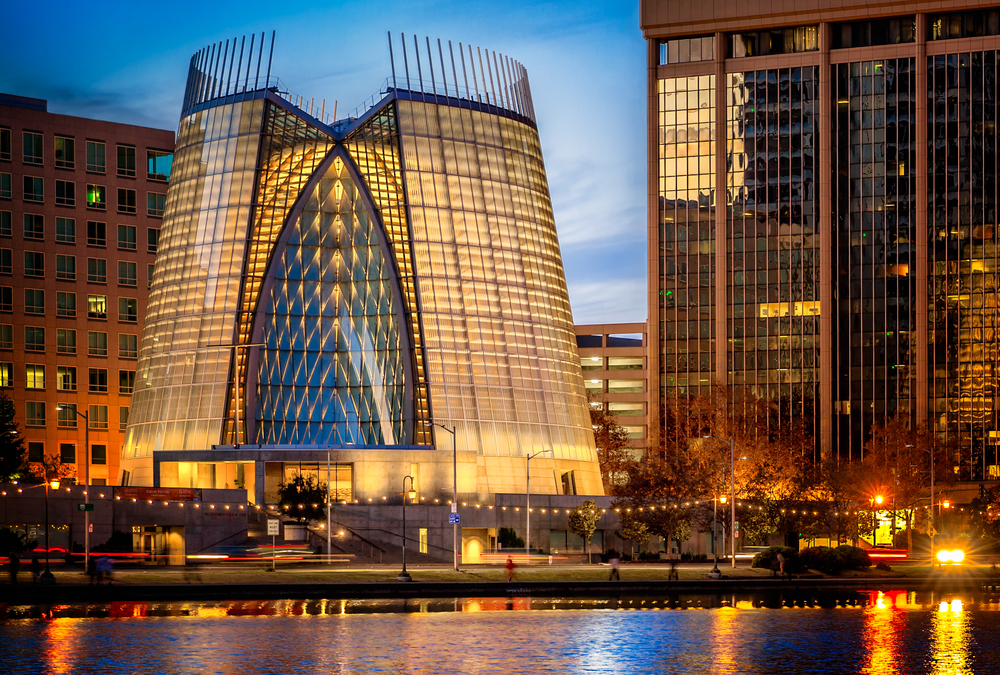
Also referred to as the Oakland Cathedral, the Cathedral of Christ the Light was the first parish to have been built completely in the 21st century.
The modern congregation replaced the Cathedral of Saint Francis de Sales, which was damaged beyond repair in the earthquake of 1989.
Instead of mirroring the cathedral that stood before it, the Cathedral of Christ the Light decided to go a completely different route with an impressive abstract design made almost entirely of glass and steel.
30. Cathedral Basilica of the Sacred Heart
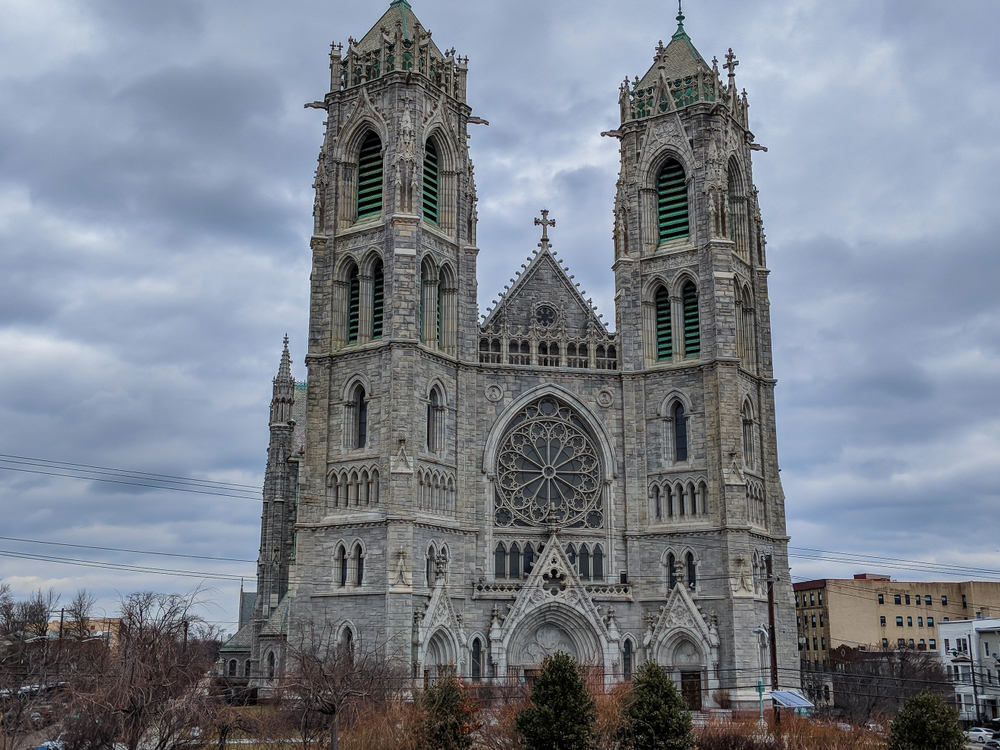
Famously known for being one of the largest cathedrals in North America, the Cathedral Basilica of the Sacred Heart took nearly 40 years to complete due to its grand size and the struggles of the time.
The cathedral was originally supposed to be designed in an Irish Gothic style, but the plans were soon ditched and replaced with plans for a massive French Gothic style parish.
Although plans for towering spires, exterior pinnacles, and sky-high towers were scrapped in the process, they were replaced by an added focus on the sculptures that shape the parish to this day.

